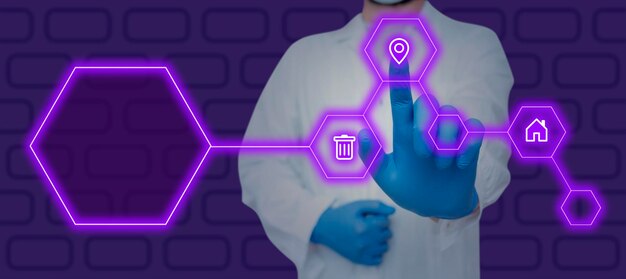NSA and Allies Unite to Enhance Cybersecurity: Best Practices for Event Logging
The National Security Agency (NSA), in collaboration with its international allies, has recently emphasized the importance of event logging as a critical component of effective cybersecurity strategies. In today’s digital landscape, where cyber threats are increasingly sophisticated and evasive, organizations must employ robust event logging practices to
Establish a Centralized Logging Architecture
(a) Centralized event logging allows for the collection, processing, and analysis of logs from multiple sources across an organization’s IT infrastructure. This consolidated data enables security teams to gain a holistic view of their network, identify anomalous behavior, and respond to threats more effectively.
Implement Standardized Logging
(b) Standardized logging, which includes using a common schema and format, facilitates easier analysis and correlation of events across different systems. The NSA recommends the Security Technical Implementation Guide (STIG)
for standardized logging practices.
Ensure Log Retention and Accessibility
(c) Proper log retention is crucial for investigating and analyzing potential security incidents. The NSA suggests storing logs for at least 90 days, while some organizations may choose to retain logs longer depending on their specific needs. Accessibility to logs should be granted only to authorized personnel, ensuring the confidentiality and integrity of the data.
Implement Effective Log Analysis Tools
(d) Log analysis tools can automate the process of identifying and responding to security threats. The NSA advises organizations to employ solutions that offer real-time monitoring, alerting, and reporting capabilities. Additionally, integrating log analysis tools with other security solutions can help streamline the threat detection process.
5. Adhere to Regulatory Compliance Requirements
(e) Regulatory compliance requirements should be taken into account when implementing event logging practices. Various industries and jurisdictions have specific regulations that govern how logs are collected, stored, and accessed. By adhering to these requirements, organizations can mitigate risk, protect their reputations, and avoid potential legal penalties.
Conclusion
By incorporating these best practices for event logging into their cybersecurity strategies, organizations can significantly enhance their ability to identify and respond to potential security threats. The NSA’s collaboration with world-news/international-news/” target=”_blank” rel=”noopener”>international
allies underscores the importance of a unified, proactive approach to cybersecurity in today’s interconnected world.
The Imperative Role of Cybersecurity in the Digital Age
In today’s digitally interconnected world, data security has become an indispensable concern for both individuals and organizations. With the increasing reliance on digital platforms for communication, commerce, and information sharing, the threat of cyber attacks continues to loom large. According to recent statistics, more than 30,000 websites are hacked every day, and over 2 million new malware threats are detected monthly. In response to these alarming numbers, the National Security Agency (NSA) and its allies have renewed their collaborative efforts to enhance cybersecurity measures.
The Escalating Cyber Threat Landscape
The cyber threat landscape has evolved significantly over the past decade. Hackers have become more sophisticated, employing advanced techniques such as social engineering, spear-phishing, and ransomware attacks to gain unauthorized access to sensitive data. The increasing use of Internet of Things (IoT) devices and cloud computing has expanded the attack surface, making it even more challenging for organizations to secure their digital assets. Furthermore, the global pandemic has accelerated the shift towards remote work and digital transactions, further increasing the risk of cyber attacks.
Collaborative Efforts to Fortify Cybersecurity
To counter these threats, the NSA and its allies have stepped up their collaborative efforts to fortify cybersecurity measures. For instance, they have initiated programs such as Information Sharing and Analysis Centers (ISACs), which facilitate the exchange of cyber threat intelligence between organizations. They have also launched initiatives to promote best practices in cybersecurity, such as Zero Trust Architecture, which assumes that all users and devices are potential threats and requires multiple layers of authentication and access controls. Additionally, they have collaborated on the development of advanced threat intelligence tools, such as Machine Learning (ML) and Artificial Intelligence (AI) algorithms, which can help detect and respond to emerging threats more effectively.
Conclusion: A Collective Effort
Cybersecurity is no longer an issue that can be addressed by IT departments alone. It requires a collective effort from all stakeholders, including governments, organizations, and individuals, to stay one step ahead of the cyber threat landscape. By collaborating on research, sharing threat intelligence, and promoting best practices, we can build a stronger defense against cyber attacks and ensure that our digital world remains safe and secure.
The Role of Event Logging in Cybersecurity
Event logging plays a crucial role in the cybersecurity landscape, acting as an essential tool for detecting, investigating, and responding to security threats. By definition, event logging is the process of recording and storing data about system activities and events as they occur. This information includes details such as who performed an action, what was done, when it happened, where it took place, and why it occurred.
Detecting Security Threats
One of the primary uses of event logs in cybersecurity is for threat detection. Anomalous activity, such as multiple failed login attempts or unusual network traffic, can often be identified through event logs. Security teams can set up alerts for specific events, notifying them when these conditions are met. These alerts can then trigger further investigation and response measures.
Investigating Security Incidents
When a security incident occurs, event logs help organizations gain a clear understanding of what happened. By reviewing the logs, investigators can determine the sequence of events leading up to the incident, identify potential causes, and trace the attacker’s actions. Event logs provide a detailed record that can be invaluable during an investigation, helping teams determine the scope of the incident and the systems or data affected.
Responding to Security Threats
In addition to detection and investigation, event logs are also critical for response efforts. Once a threat has been identified, teams can use the information in event logs to take action. This might involve isolating affected systems, patching vulnerabilities, or terminating compromised accounts. Event logs can also help teams assess the effectiveness of their response measures and make improvements as necessary.
Understanding the Who, What, When, Where, and Why of Security Incidents
Event logs help organizations understand the context of security incidents by providing answers to the questions of who, what, when, where, and why. Who performed an action? What was done? When did it occur? Where did it take place? And most importantly, why did it happen? This information is essential for understanding the nature of a security threat and taking appropriate action. By leveraging event logs effectively, organizations can improve their cybersecurity posture and better protect their systems and data from threats.
I NSA’s Contribution: Best Practices for Effective Event Logging
The National Security Agency (NSA) is renowned for its expertise in data collection and analysis, particularly in the realm of cybersecurity. One significant contribution NSA has made to the information security community is promoting best practices for effective event logging. Event logging, also known as audit trail recording, refers to the process of capturing and archiving system activities. It is a crucial aspect of maintaining a robust security posture as it enables organizations to detect, investigate, and respond to potential threats.
Why Event Logging Matters
Event logging plays a crucial role in maintaining the confidentiality, integrity, and availability (CIA) of an organization’s information assets. By capturing and analyzing system activities, security teams can identify anomalous behavior, detect intrusions, and investigate incidents more efficiently. Effective event logging also supports regulatory compliance requirements, such as HIPAA, PCI DSS, and SOX, among others.
Best Practices from NSA
The NSA’s Center for Cybersecurity Technology (C2) has published a series of guides outlining best practices for effective event logging. Here are some key recommendations:
Log Everything
NSA advises organizations to log all possible events, including system failures, errors, and warnings. This comprehensive approach ensures a more complete understanding of the security landscape and enhances incident response capabilities.
Use Standardized Log Formats
Utilizing standardized log formats, such as Common Security Event Logging (CSELF), ensures compatibility across various systems and simplifies the process of centralized logging and analysis.
Configure Log Management Systems
Properly configuring log management systems, including setting retention policies and establishing correlation rules, is essential to maximizing the value of event logs.
Implement Log Analysis Tools
Leveraging log analysis tools, such as Splunk, Elasticsearch, or ArcSight, enables security teams to efficiently parse and make sense of large volumes of event data.
5. Establish Log Analysis Workflows
Creating well-defined log analysis workflows ensures that security teams can respond to incidents effectively and maintain a continuous state of readiness.
6. Monitor Logs Regularly
Regular monitoring of event logs is essential to maintaining a strong security posture. NSA recommends setting up alerts for specific events or anomalous activity and reviewing them on a regular basis.
7. Maintain Logs Securely
Protecting event logs from unauthorized access and manipulation is vital to their effectiveness. Implementing proper access controls, encryption, and data backups can help ensure log integrity and confidentiality.
By following NSA’s best practices for effective event logging, organizations can significantly improve their cybersecurity posture and better protect against potential threats.
Detailed Event Descriptions in Information Security:
Importance of Including Contextual Information in Event Logs
Event logs play a crucial role in information security by recording the activities that occur within an IT environment. However, simple event descriptions, such as “User X accessed File Y at Time Z,” can be insufficient for effective security analysis and incident response. Contextual information, which includes details like the user’s role, the location from where they accessed the file, and the type of device used, can significantly enhance the value of event logs.
NSA Recommendations for Minimum Required Data Points (Who, What, When, Where)
The National Security Agency (NSA) provides a guideline known as the Common Security Model (CSM) for defining the minimum required data points in event logs. The CSM suggests that every log entry should contain the following information: Who (identity of the user or system), What (description of the action), When (date and time), and Where (location or context).
Benefits of Extended Event Descriptions: Richer Incident Analysis and Faster Threat Detection
Richer Incident Analysis
By including additional context, such as Why (reason for the action), How (method used to carry out the action), and IP addresses and ports involved, security analysts can perform more thorough incident analysis. This information helps in understanding the motivation behind the activity, assessing potential impact, and determining the scope of the incident.
Faster Threat Detection
Extended event descriptions also contribute to faster threat detection. For instance, detecting an anomalous pattern of user behavior may be easier when the logs include detailed information about user roles and permissions, frequency and duration of activities, and unusual access patterns. With this information, security teams can quickly identify and respond to potential threats before they escalate.
Centralized Logging Infrastructure: Enhancing Security and Efficiency
Centralized logging infrastructure, a suggestion put forth by various security agencies, including the National Security Agency (NSA), is a crucial component of modern-day information security. Centralized logging refers to the practice of collecting, aggregating, and managing logs from multiple sources into a single repository. This approach offers several advantages, including but not limited to:
Improving Overall Security Posture
Centralized logging simplifies the log management process, making it easier to monitor and analyze data from various sources. With all logs in one place, security teams can identify trends and anomalies more efficiently. Additionally, implementing centralized logging reduces the risk of data silos, which can impede a comprehensive view of an organization’s security posture.
Real-Time Monitoring and Response
A centralized logging infrastructure enables real-time monitoring, allowing organizations to detect and respond to security incidents more effectively. By aggregating log data from various systems in real-time, security teams can quickly identify potential threats and take immediate action, reducing the window of opportunity for attackers.
Incident Response Efforts
Centralized logging is also essential during incident response efforts. Having all log data in one place allows security teams to investigate and analyze the entire timeline of an incident more efficiently, helping them understand the scope and impact of the breach. Furthermore, having a centralized logging solution can significantly reduce the time required to gather relevant data during an investigation, ultimately improving overall incident response capabilities.
Benefits of a Centralized Logging Infrastructure
- Easier management and analysis
- Real-time monitoring and threat detection
- Improved incident response capabilities
- Reduced risk of data silos
- Centralized storage and access to log data
Summary
In conclusion, a centralized logging infrastructure is a crucial element of an effective security strategy. By consolidating logs into a single repository, organizations can improve their overall security posture, enable real-time monitoring and response, and support more efficient incident response efforts.
Standardized Logging Formats
Standardized logging formats play a crucial role in simplifying event log analysis across multiple systems and platforms. When logs are recorded using a common format, it becomes easier for organizations to centrally manage and analyze event data from various sources. This is particularly important in the context of security, where the ability to quickly identify and respond to threats can mean the difference between a minor incident and a major breach.
Simplifying Event Log Analysis
With standardized logging formats, organizations can leverage tools like Security Information and Event Management (SIEM) systems to collect, correlate, and analyze log data from multiple sources. This enables security teams to detect anomalous activity that might indicate a threat, even if it occurs across different systems or applications. Moreover, standardization simplifies the process of integrating new systems and applications into an organization’s security infrastructure, as well as ensuring compliance with various regulatory requirements.
NSA Recommendations
The National Security Agency (NSA) has recommended the use of widely-adopted formats like SIEM and the Common Security Event Logging Format (CSEF) for standardized logging. CSEF is a vendor-neutral, open format for logging security events that has been adopted by various organizations and industries. By using these standards, organizations can ensure that their logs are interoperable with a wide range of tools and platforms, making it easier to manage and analyze event data.
Importance of Supporting Chosen Standard
It is important for all applications, devices, and services to support the chosen standard in order to fully reap the benefits of standardized logging. This means that developers and IT teams should prioritize implementing logging features that conform to these standards, as well as ensuring that existing systems are configured to generate logs in the standard format. By doing so, organizations can ensure that their event data is easily accessible and usable by their security teams, enabling more effective threat detection and response.
Allies’ Contributions: Collaborative Efforts to Strengthen Event Logging Practices
In the ongoing quest to bolster event logging practices and fortify cybersecurity defenses, various allies have joined forces to contribute their expertise, resources, and innovative solutions. These collaborative efforts have been instrumental in driving advancements and addressing challenges in event logging.
Government Agencies:
Government agencies, such as the National Security Agency (NSA), National Institute of Standards and Technology (NIST), and the European Union Agency for Cybersecurity (ENISA), have played a vital role in establishing standards, guidelines, and best practices for event logging. For instance, NIST Special Publication 800-92, “Guidelines on Computer Security Log Management,” provides recommendations on how organizations should design, collect, and analyze security logs to identify, respond to, and mitigate cybersecurity incidents.
Industry Associations:
Industry associations, like the Information Technology Information Security (IT-ISAC) and the Financial Services Information Sharing and Analysis Center (FS-ISAC), have been instrumental in facilitating information sharing, collaboration, and education among their member organizations. They provide resources, tools, and expertise to help members improve their event logging practices and stay abreast of the latest threats and vulnerabilities.
Technology Vendors:
Many technology vendors have introduced innovative solutions designed to enhance event logging and help organizations better understand their security posture. For instance, Security Information and Event Management (SIEM) systems, advanced analytics platforms, and log management tools have become indispensable for organizations seeking to strengthen their event logging practices. These solutions not only help organizations collect, process, and analyze vast amounts of data but also provide valuable insights and threat intelligence to enable proactive security measures.
Academic Institutions:
Academic institutions have been at the forefront of research and innovation in the field of event logging, contributing to a better understanding of cybersecurity threats and developing advanced techniques for threat detection and analysis. For instance, researchers have proposed the use of machine learning algorithms, artificial intelligence, and behavioral analytics to improve event logging capabilities and enable more effective threat detection and response.
Collaborative Platforms:
Collaborative platforms, like the Mitiga Threat Sharing and Analysis Network (MTSAN) and the Cyber Threat Alliance (CTA), have facilitated information sharing, collaboration, and analysis among organizations to identify, understand, and respond to cyber threats. These platforms provide members with access to real-time threat intelligence, enabling them to improve their event logging practices and strengthen their cybersecurity defenses.
Sharing Threat Intelligence: A Crucial Collaboration for Enhanced Cybersecurity
In today’s interconnected world, cyber threats are constantly evolving, and no organization is immune. Sharing threat intelligence among allies has emerged as a powerful strategy for staying informed about the latest threats and vulnerabilities. By collaborating and exchanging valuable cybersecurity information, organizations can strengthen their defenses and protect against potential attacks.
Collaboration in Action
Threat intelligence sharing is a two-way street, with organizations not only receiving information but also contributing their own findings. This reciprocal exchange can take place through various channels such as industry groups, government agencies, or automated platforms. By pooling resources and sharing insights, organizations can identify trends, understand the impact of threats, and take swift action to mitigate risk.
The Power of Contextualized Data
Contextualizing threat data in event logs is a crucial aspect of effective security analysis. With the volume and complexity of cyber threats escalating, it’s essential to be able to quickly identify and respond to potential issues. By correlating threat data with event logs, organizations can gain a more comprehensive understanding of the threat landscape and assess risks accordingly. This contextualized analysis helps security teams make informed decisions and prioritize their efforts, ultimately enhancing overall cybersecurity posture.
Bridging the Gap Between Threat Intelligence and Security Analytics
The integration of threat intelligence into security analytics platforms has become increasingly important in this era of advanced threats. By automating the process of correlating threat data with event logs, organizations can bridge the gap between threat intelligence and security analytics. This results in real-time visibility into potential threats, enabling security teams to take swift action before an attack escalates.
Conclusion
Collaborative threat intelligence sharing is a powerful tool in the ongoing battle against cyber threats. By working together and contextualizing threat data, organizations can enhance their security posture and stay informed about the latest vulnerabilities and risks. Ultimately, this collaboration not only benefits individual organizations but also contributes to a stronger collective cybersecurity landscape.
Joint Research and Development Initiatives
Advanced Event Logging Technologies: The
machine learning (ML)
and
artificial intelligence (AI)
to bolster their capabilities in cybersecurity incident detection and response. These collaborative efforts aim to develop more effective, efficient, and intelligent systems that can proactively identify and respond to potential threats in today’s complex cyber environment.
Benefits of ML and AI: The implementation of
machine learning (ML)
and
artificial intelligence (AI)
in event logging technologies offers numerous advantages. For instance, these advanced solutions can analyze vast amounts of data at an unprecedented speed and accuracy, enabling them to detect anomalous behavior that might indicate a cybersecurity incident. Moreover, they are capable of continuously learning from the data and updating their models to adapt to evolving threats. This results in improved incident detection, reduced false positives, and enhanced threat hunting capabilities.
Use Cases: The application of cutting-edge
ML and AI event logging technologies
can prove to be instrumental in various use cases. For example, they can:
- Help organizations prioritize their responses by identifying critical incidents that require immediate attention based on the level of threat and potential impact.
- Assist in investigating complex threats by providing valuable insights and context, enabling analysts to quickly narrow down their focus and identify the root cause of an incident.
- Provide continuous monitoring of their networks, enabling them to stay one step ahead of potential adversaries and proactively address threats before they cause significant damage.
In conclusion, the collaborative research and development efforts between the NSA and its allies in creating advanced event logging technologies that harness the power of machine learning and artificial intelligence have the potential to revolutionize cybersecurity incident detection and response. These solutions offer numerous benefits, including faster and more accurate threat identification, continuous learning capabilities, and improved overall security posture.
Training and Education Programs
In today’s dynamic cybersecurity landscape, keeping up with the latest threats and technologies requires continuous learning and skill development. IT professionals, security analysts, and incident responders play crucial roles in protecting their organizations from cyber attacks. Thus, investing in their training and education is essential to stay ahead of evolving threats. Here are some training programs designed to enhance event logging skills:
Splunk Training
Splunk is a popular platform for indexing, searching, and analyzing machine-generated data. Splunk training equips professionals with the skills to use Splunk for log management, event correlation, and security analysis.
Cybersecurity Bootcamps
Bootcamps offer intensive training programs in cybersecurity, including event logging. These immersive courses help individuals develop a strong foundation in security concepts and tools.
Certification Programs
Certifications like CompTIA Security+
, CISM (Certified Information Security Manager), and GIAC Security Essentials (GSEC)
provide a standardized measure of an individual’s knowledge and skills. They include event logging as part of their curriculum.
Online Courses
Various online platforms offer courses on event logging, from beginner to advanced levels. These flexible and accessible learning opportunities cater to professionals’ diverse schedules and budgets.
Why is upskilling essential for IT professionals, security analysts, and incident responders?
Evolving Threats
Cyber threats are constantly evolving, and organizations must ensure their workforce keeps up. Upskilling helps professionals stay informed about the latest trends and tools to counteract emerging threats.
Compliance Requirements
Regulatory bodies mandate specific security practices and logging requirements. Ensuring your team is well-versed in these areas can help organizations maintain compliance with industry standards, such as HIPAA or PCI DSS.
Career Advancement
Upskilling not only benefits the organization but also individuals’ careers. Acquiring new skills can lead to professional growth, increased earning potential, and more opportunities for advancement within the organization or industry.
Conclusion
In today’s digital landscape, event logging has become an essential component of any robust cybersecurity strategy. As highlighted in the article, effective event logging practices can provide valuable insights into potential security threats and aid in incident response efforts. Here are some key takeaways from the article:
Log Everything
The first step to enhancing event logging practices is to log every relevant event, including those that may initially seem insignificant. This comprehensive approach can help organizations detect anomalous behavior and identify potential threats.
Use a Centralized Log Management System
Centralizing log data in a single repository
can help streamline the process of analyzing logs, enabling organizations to respond more effectively to security incidents.
Implement Proper Access Controls
Access control is a crucial aspect of effective event logging practices. Ensuring that only authorized personnel have access to log data can help prevent unauthorized access and potential data breaches.
Utilize Machine Learning and AI
Integrating machine learning and artificial intelligence (AI) technologies into event logging practices can help organizations identify and respond to threats more effectively by analyzing large volumes of log data and identifying anomalous behavior.
Call to Action
Given the importance of event logging practices in bolstering an organization’s cybersecurity posture, it is crucial that organizations take the necessary steps to implement these best practices. By logging everything, centralizing log data, implementing proper access controls, and utilizing machine learning and AI technologies, organizations can significantly enhance their ability to detect and respond to security threats.
Next Steps
To get started, organizations can conduct a thorough review of their current event logging practices and identify areas for improvement. Additionally, they can explore various log management solutions to determine which one best fits their needs and budget.
Stay Informed
Finally, it’s essential that organizations stay informed about the latest cybersecurity trends and threats to ensure they are implementing the most effective event logging practices. By staying up-to-date, they can better protect themselves against emerging threats and maintain a strong security posture.






